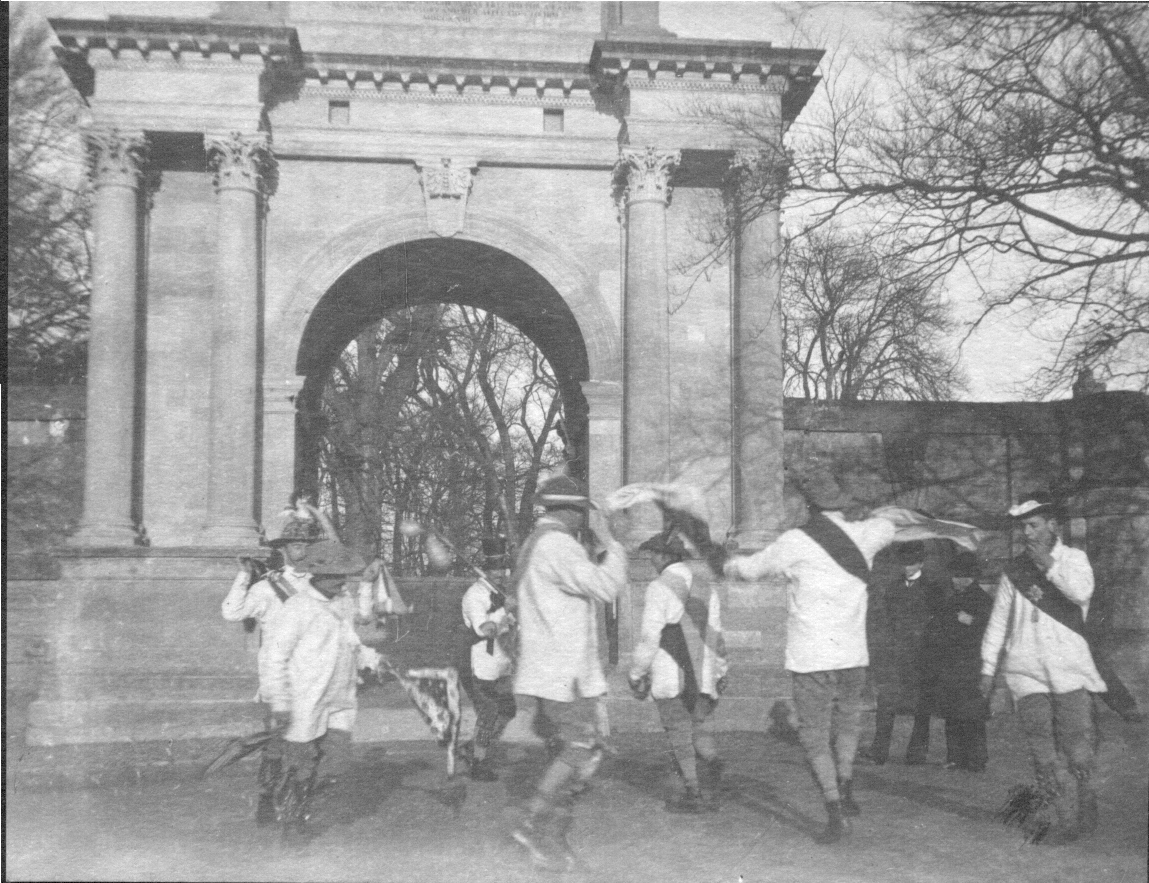|
|
It was on a trip to Blenheim in about 1901 sthat Eynsham Morris were seen by the artist William Nicholson, who painted a set of pictures of the side and its foreman Feathers Russell. Feathers made half a dozen trips to Woodstock to sit for them, for a sovereign a time.
Here is how Max Beerbohm described one Woodstock performance: ‘The first dance was in full swing when I approached. Only six of the men were dancers. Of the others, one was the "minstrel", the other the "dysard". The "minstrel" was playing a flute; and the "dysard" I knew by the wand and leathern bladder which he brandished as he walked around, keeping a space for the dancers, and chasing and buffeting merrily any man or child who ventured too near ... I was told that the wife or sweetheart of every dancer takes special pains to deck her man out more gayly than his fellows. But ... so bewildering was the amount of brand‑new bunting attached to all these eight men that no matron or maiden could for the life of her determine which was the most splendid of them all.' (Max Beerbohm, "A Morris for May Day", Harpers Magazine, 1907)
The antiquary Percy Manning noted the members of the side in 1902 as: Ed Russell ('Feathers'), William Russell ('Buff'), Horace Belcher, E May, Charles Masters ('Clemmie Hedges'), Henry Hedges, G' Masters, Fred Harwood and Ben Ayres. In the winter the dancers usually performed a mummers' play as well as dancing. 'We did all the houses, Eynsham Hall, Blenheim Palace ... we had to walk,' said the last survivor of the pre World War I side. They sometimes used a donkey as pack animal on these tours.
A significant event in the side's history came when the folk dance collector Cecil Sharp visited in 1908. Sharp rarely saw a full side of traditional dancers perform together, as most villages had long abandoned their dances by his time. He met them at the Railway Inn and wrote of the occasion as follows:
“The dancers met me, I remember, one dull, wet afternoon in mid winter, in an ill-lighted upper room of a wayside inn. They came straight from the fields in their working clothes, sodden with mud, and danced in boots heavily weighted with mud to the music of a mouth organ, indifferently played. The depression which not unnaturally lay heavily upon us all at the start was, however, as by a miracle dispelled immediately the dance began, and they gave me as fine an exhibition of Morris dancing as it has ever been my good fortune to see.”
(CJ. Sharp, The Morris Book, part III, 2nd edn. 1924)
During this period there was a boys' side as well as a men's side, and this strength probably helped the side to survive World War I. During the War the mummers' play continued to be performed, and some Morris also.
|
|
 Eynsham at the gates of Blenheim Palace. Click on the photo for the album |
|

